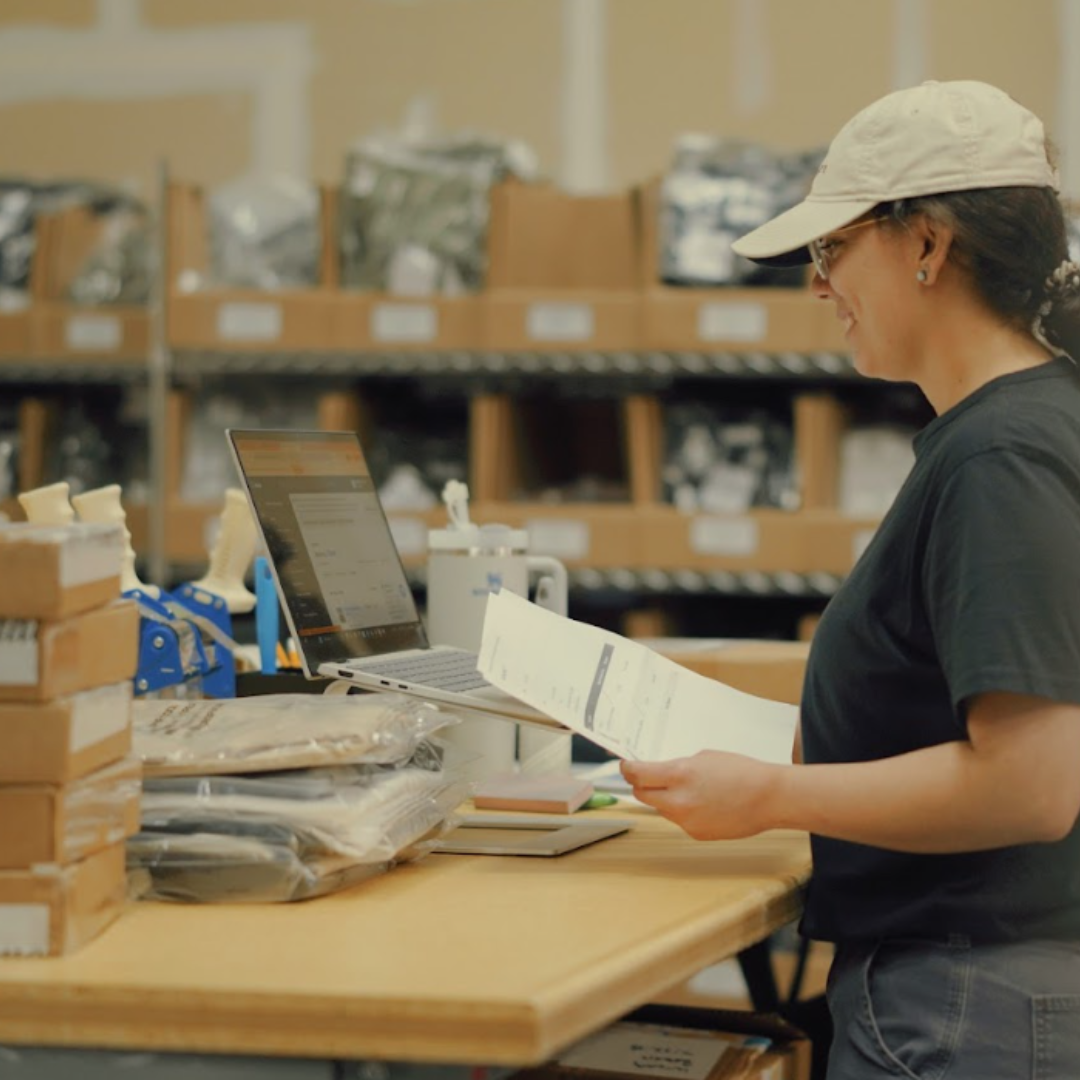TL;DR: Merch is a product line, not an afterthought. Launch with demand first, market through the lifecycle, and protect margin with smart ops.
That’s Effective Merch.
Merch too often gets treated like a box-checking exercise: slap your logo on a hoodie, place a bulk order, and hope people buy. The result? Closets full of unsold stock and a program that feels more like clutter than opportunity.
But merch has always been more than stuff. The best drops aren’t about fabric or mugs, they’re about identity and connection. Think of the band tee you wore until it faded, or the cap that told the world which team you were rooting for. Those weren’t just products; they were stories you could wear.
That’s the potential sitting in front of every brand today. With the right approach, merch can drive real revenue, strengthen community, and turn casual buyers into advocates who carry your message wherever they go.
This blog lays out how to make that happen. We’ll share a simple framework, validating demand before you produce, marketing beyond launch day, and protecting margin with smart ops. Plus examples of how brands are running merch like a true product line.
Let’s dig in.
Why Merch Still Resonates
There’s something powerful about holding your brand in your hands. A hoodie, a tote, a cap, they’re not just products. They’re proof of connection. For customers, it’s a way to signal belonging. For you, it’s a way to grow both community and revenue.
Merch has been part of culture for decades. Concert tees in the ‘70s became souvenirs that lived longer than the tour. Sports teams turned logos into global symbols. The Yankees cap or Lakers jersey became shorthand for entire cities. Nonprofits and campaigns figured out early that the right t-shirt could spark conversations far beyond the event itself.
Today, with eCommerce and social platforms, merch has evolved again. It’s no longer just memorabilia. It’s a channel. It’s one of the most accessible ways for a brand to generate revenue, build loyalty, and extend reach.
Done Right, Merch Can…
When merch is done with intention, it’s not just extra stuff. It’s a business driver. Here’s what that looks like:
Lift AOV (Average Order Value)
A skincare brand offers a limited-edition pouch free on orders over $60. Customers add a second serum to qualify, and suddenly carts are worth 25% more.
Increase Repeat Purchase Rate
A coffee roaster drops a seasonal mug with their winter blend. Buyers who grab the mug come back for spring and summer blends, turning into repeat customers because their morning ritual now includes the brand.
Turn Customers into Walking Billboards
A nonprofit launches a preorder for a bold Earth Day tee. Members post their orders on Instagram, tagging the org, and suddenly the message spreads organically — donations and awareness rise without extra ad spend.
In all these cases, merch wasn’t an afterthought. It was a tool to deepen loyalty, build momentum, and grow margins.
What We Mean by “Effective Merch”
“Effective Merch” means applying the same discipline you’d use for any other product line. It’s merch that earns its keep. That looks like:
- Demand-First Launches – Validate before you produce.
- Assortment That Sells – Choose SKUs based on data, not guesses.
- Lifecycle Marketing – Keep pushing after launch day.
- Ops That Protect Margin – Ship smarter and control costs.
- Unit Economics That Work – If it doesn’t make money on paper, it won’t make money in real life.
Play 1: Demand-First Preorders (Stop Guessing; Start Selling)
Guesswork is where most merch fails. Preorders flip the script.
- Build hype, not stockpiles. Teasers, waitlists, countdowns, and limited windows create momentum.
- Collect cash up front. Customers fund production, not your balance sheet.
- Set a close date. “Closes Friday” adds urgency and clarity.
Example: A nonprofit client of ours opened a two-week preorder window for a limited-run tee. They collected enough orders to cover production, shipped on time, and ended with zero leftover inventory. Even better, fans posted “I waited for this” selfies that spread the brand organically.
Play 2: Ship Smarter, Not Harder (Protect the Margins You Just Earned)
Shipping is where profits quietly leak out. Protecting margin isn’t glamorous, but it’s essential.
- Rate-shop every order. Carrier pricing moves daily; your tools should, too.
- Use free-shipping thresholds. “Free shipping over $75” encourages bigger carts and consolidates parcels.
- Right-size packaging. Dimensional weight charges are real; smart packouts save dollars.
Example: At TVP NYC, we use our in-house Shipping Index to auto-select the most cost-effective carrier for each order. No manual toggling, just faster SLAs and lower costs. For one client, switching to this model saved them over 18% in annual shipping fees — pure margin back to the business.
Play 3: Treat Merch Like a Product Line (Because It Is)
Merch isn’t side-hustle swag. It’s a product line, and it needs to be run like one.
- Forecast with your data. POS and ecommerce history show you which sizes and colors actually sell.
- Run drops like launches. Build briefs, assets, budgets, and channels into a campaign calendar.
- Retire slow movers quickly. Bundle, markdown, or kill them before they eat storage space.
- Iterate on winners. Popular SKUs get new colors or collabs; underperformers inform the next brief.
Example: A lifestyle brand we worked with turned one viral hoodie into a long-running SKU by introducing seasonal colors and influencer collabs. Instead of one-and-done, it became a franchise product line that anchored their merch strategy for years.
Quick Checklist: How to Know You’re Running Effective Merch
Before you launch your next drop, make sure you can check every box:
▢ Preorder window and ship-by date set
▢ Size curve forecasted from real data
▢ Contribution margin ≥ target after shipping
▢ Rate-shopping enabled at order level
▢ Launch calendar + lifecycle promos scheduled
▢ Kill/markdown rules for slow movers
If you can’t check all six, you’re not ready to drop.
The Fun Part
Merch should be exciting, not stressful. With demand-first launches, smart shipping, and disciplined assortment, you won’t end up running a charity for lost hoodies. You’ll build a program that sells through, tells your story, and grows your margin.
Want help? Get a free 20-minute Effective Merch Plan for your next drop. We’ll review your SKUs, shipping setup, and launch calendar, and hand you a step-by-step playbook.



